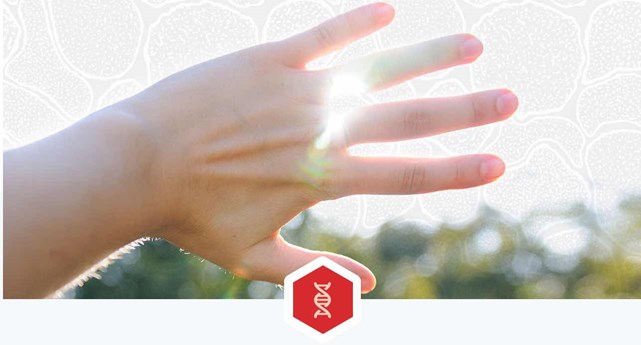
May is Melanoma/Skin Cancer Detection and Prevention Month: the perfect time to learn more about the disease – and what the Weizmann Institute of Science is doing to help.
Did you know that skin cancer is the most common cancer in America? And that it’s been on the rise for more than 30 years?
The single most significant cause of skin cancer is the sun. That’s certainly true when it comes to melanoma – the deadliest of all skin cancers – with the Skin Cancer Foundation citing research that shows that 86% of melanomas are linked to UV radiation. Thus, prevention – such as wearing a high-SPF sunblock or protective clothing anytime we go outside, even on overcast days – and early screening are the most important tools in our skin-cancer-defeating arsenal.
There are other factors to consider as well, such as the role of genetics and, importantly, the development of effective treatments. That’s where the Weizmann Institute of Science and our sunshine-loving scientists come in. Here are just a few current projects:
-
Suppressing melanoma. Of the hundreds of genes that can be mutated in a single case of melanoma, only a handful may be true “drivers” of cancer. Now, renowned skin-cancer researcher Prof. Yardena Samuels and her team have discovered a driver of a particularly deadly subset of melanomas that is seeing a rise in new cases.
This gene is a newly identified member of a group of genes called tumor suppressors. The team found that, when the tumor suppressor gene was not “expressed” in a melanoma, it correlated with patient fatalities. Prof. Samuels showed that restoring the function of this tumor suppressor gene in melanoma cells caused them to stop growing and die. Her discovery could improve understanding of how melanoma grows and spreads, and may lead to new directions in treatment.
-
Mapping melanoma for personalized medicine. In another first, Prof. Samuels also helped map the melanoma genome as a member of an international consortium of scientists working on the Cancer Atlas Digging into this “unexplored goldmine of information on what makes cancer tick” will produce a wealth of data that will advance personalized skin-cancer medicine. “We are entering a new era of precision medicine in melanoma,” Prof. Samuels says, “in which physicians will aim to determine the personal profile of each cancer and tailor the treatment accordingly.”
-
Identifying genetic mutations. Prof. Samuels uses the power of DNA sequencing to identify new groups of genetic mutations involved in melanoma. One of her discoveries, a mutation found in about one-fifth of melanoma cases, inspires particular hope because it is located in a gene already targeted by a drug approved for treating some types of breast cancer.
-
Interfering with melanoma’s mail. Prof. Rony Seger discovered a molecule that keeps cancer cells from getting their “mail”: a stream of messages that cells constantly send, but which can easily go awry, promoting cancer. The mail-stopping molecule actually eradicated melanoma in tests. Prof. Seger envisions it being added to patients’ melanoma drug regimens in rotation, so that resistance – a major problem with melanoma treatments – cannot develop.
-
How does melanoma survive treatments? Of the many forms of cancer, melanoma is particularly prone to becoming resistant to drugs, but how, exactly, is it able to live through these powerful treatments? Dr. Ravid Straussman found a shocking clue: normal cells living within a tumor may actually be helping the cancer cells survive. He is now studying melanomas to identify the biological basis of this drug resistance.
-
Melanomas get stressed, too. Prof. Menachem Rubinstein studies how tumor cells regulate stress, focusing on the endoplasmic reticulum (ER), a cellular organelle in which proteins are synthesized. In studying how melanoma cells stay alive during extensive ER stress due to nutrient shortage, he found a protein that promotes melanoma growth, but not in the usual ways; rather, it’s by helping the cancer cells withstand such stress, thus reducing death. This discovery reveals a new pathway that melanomas use in order to thrive – and possibly a new way to fight them.
We all want to enjoy the sun safely. You can help make it so by supporting these dedicated Weizmann Institute scientists and their life-enhancing, lifesaving research!
